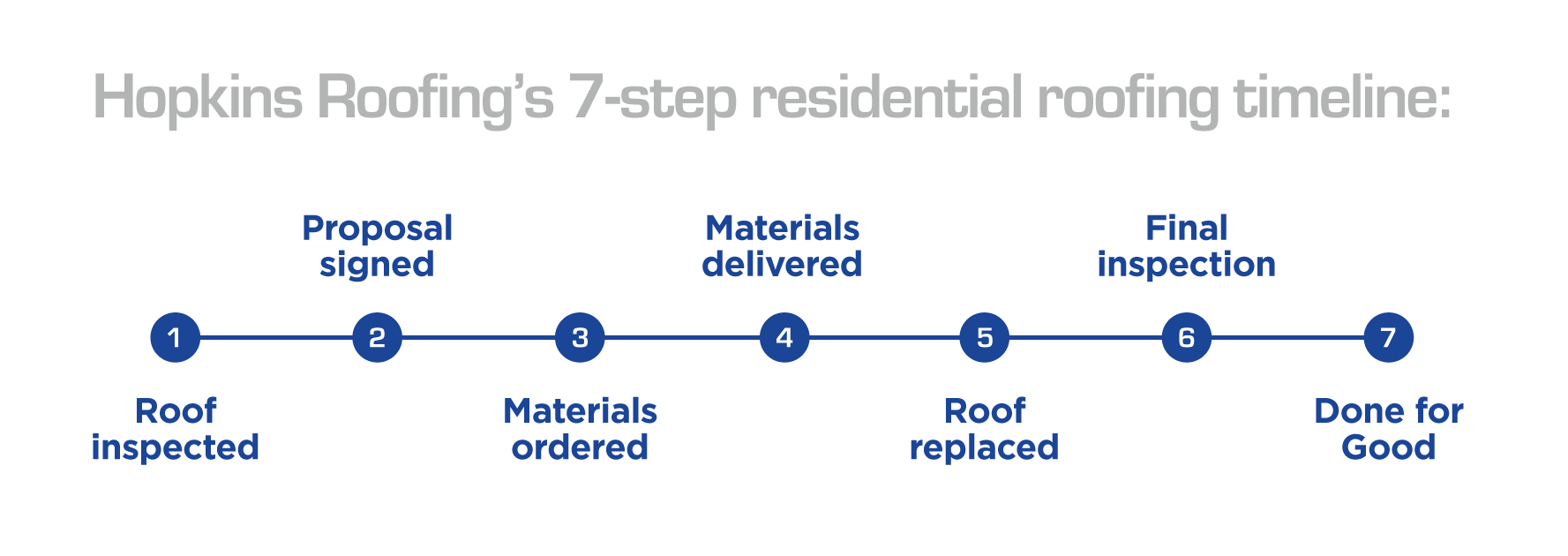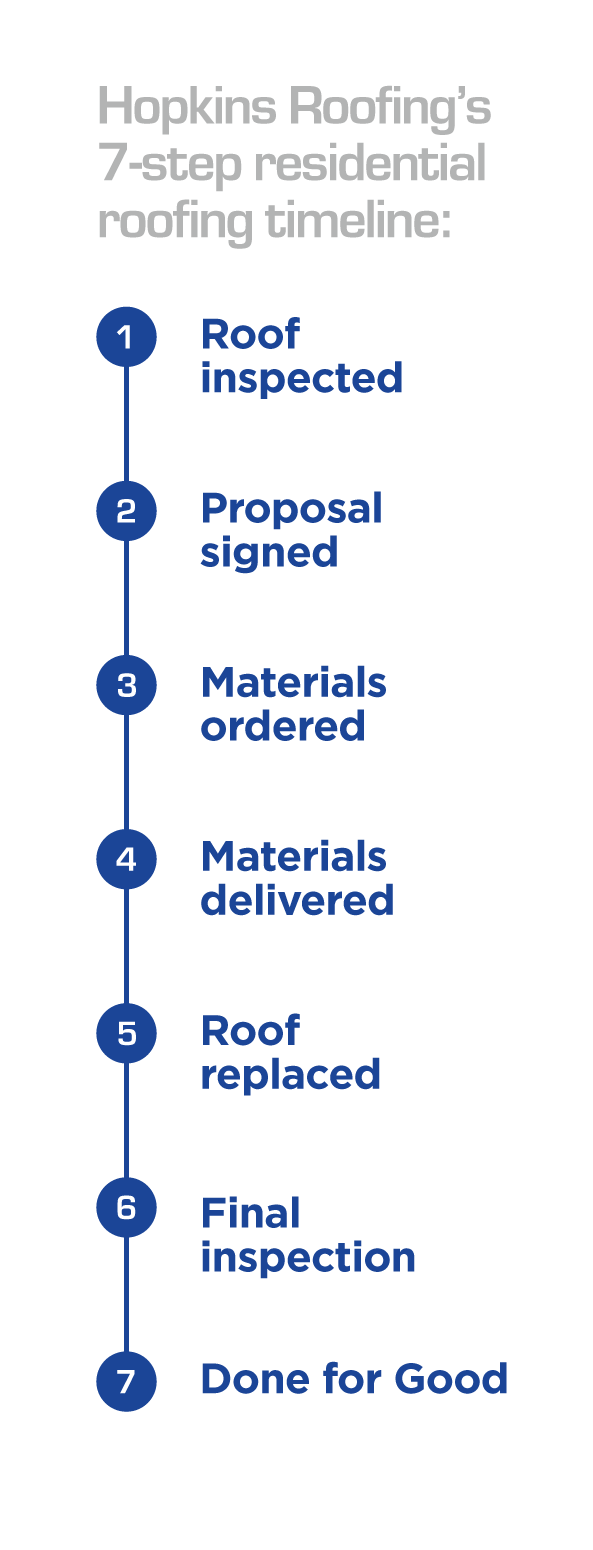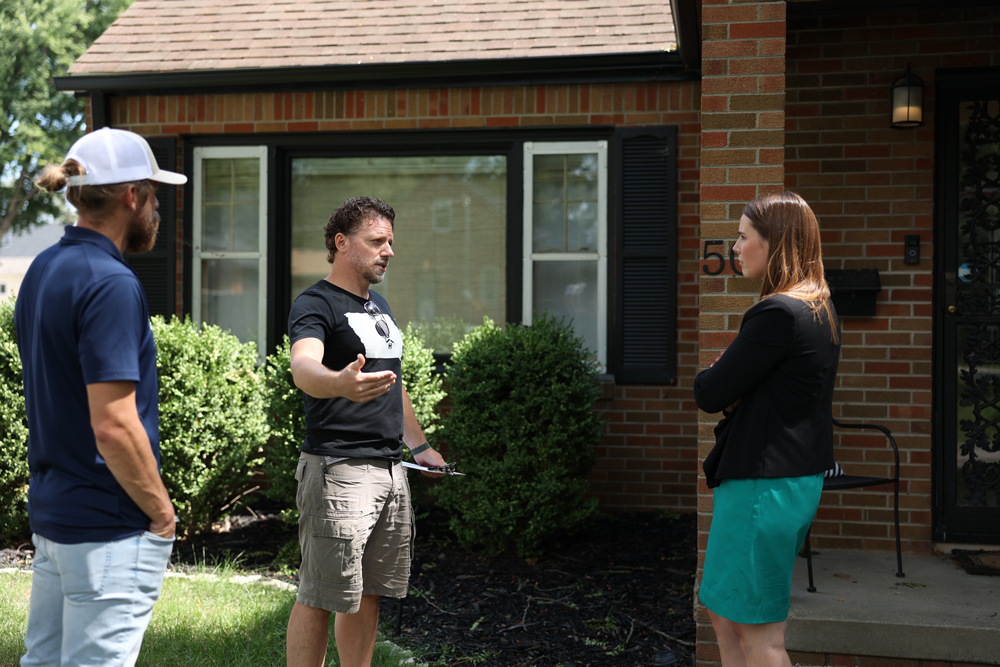At some point, every home needs a new roof. A common roofing question we hear when this time comes is: How long will it take for my roof replacement project? You want to know if you need to make plans for your dog, if your work-from-home schedule will be disrupted, and more.
It can take anywhere from two to six weeks from the time you sign a contract with a roofing contractor to the final inspection of your new shingle roof. The actual on-site work, though? The average roofing company can replace your roof in just one to two days! 
6 factors that may impact your timeline
1. Size of your roof
As you may have guessed, larger roofs usually take longer than smaller ones. Typically, if the roof is smaller than 30 squares (a roofing square is a measurement that covers 10 by 10 feet) and the weather is optimal, the roof can be done in one day. If it is more than 30 squares (or 3,000 square feet), it will generally take two days—sometimes more, depending on other factors.
2. Complexity of your roof
Is your roof steep? Steep roofs can take longer since crews have to be extra careful when getting on and walking across your roof. Are there a lot of dormers—windows that project vertically from a sloping roof—or peaks? Those, along with chimneys, skylights, and satellite dishes, require more detailed work to make sure water and other elements don’t get in.
3. Type of roof material
Synthetic slate, concrete tiles, luxury—depending on the shingle type you choose, installation can take longer. For example, asphalt shingles typically take one to two days, while a metal roof can take three to five days. Luxury shingles may take up to five days, especially if your home is larger. They take longer to install because they require hand nailing instead of a nail gun and must follow a certain pattern when being installed. If you have a flat roof section, that will also increase the timeline, depending on the size of the area.
4. Weather and time of year
Are daylight hours long or short? Is it raining, snowing, freezing, or sweltering? 
To make sure your roof is sealed and installed properly, Hopkins will only do the installation if temperatures are above 40 degrees. There are a number of reasons for this:
- Shingles won’t adhere or seal as quickly until temperatures are above freezing. If the roof is installed in cold temperatures and doesn’t have the opportunity to seal itself, it is at higher risk for wind damage.
- Shingles become more brittle when cold, resulting in potential damage to the shingles.
- When temps are colder, the power of the nail gun must be turned down, so it doesn’t break the shingles.
5. Accessibility to your roof
If the part of your roof that needs to be replaced is hard to get to, it may take longer. Not only do the roofers have to get onto the roof, but they also have to bring materials and necessary tools with them. If your roof is a few stories off the ground, it may require a lift for crews to access it.
6. Structural damage
Is there structural damage to your roof or home? To give yourself an idea of whether this is an issue, look at your roof and see if it slants on the ends or droops in the middle. If so, it will likely take longer than it would to simply replace the shingles.
The best way to find out how long it will take…
Have Hopkins Roofing perform a free inspection. Contact us today and our residential roofing consultants will provide you with a quote and give you specifics on how long your project will take and what materials are needed.





